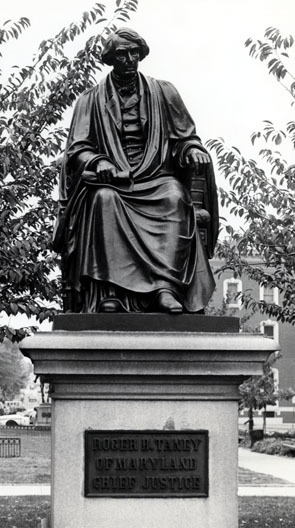Public
Confederate Monuments are Under Review
The Mayor’s directive to the Commission to Review Public
Confederate Monuments is straight-forward, but the task itself is sobering and
difficult. In directing the Commission to provide the best recommendations for
Baltimore, the Commission must analyze and review a nuanced, multi-layered and
painful history, and contextualize that history within today’s current events.
Historical facts must be separated from misinterpretation and misinformation,
and the symbolic meaning of these art pieces must be understood. The Commission
must comprehend
how these monuments reflect the beliefs and intentions of their donors and how
the monuments convey those views today. The Commission will provide a
forum to allow citizens to share how they experience the monuments. The Commission
intends to place these monuments in an historical context that more accurately
reflects the realities of
the past, and explore how these monuments can best exist in Baltimore today.
The actions of this Commission will not “erase” history,
as some may
fear, but rather
illuminate and add to it.
 |
Roger B. Taney Monument (1887)
 These monuments were created by prominent sculptors at the behest of prominent citizens.
The Roger B. Taney monument, placed in Mount Vernon Square in 1887, was donated by William Walters. This monument is a copy of the original located in Annapolis, and was sculpted by William Henry Rinehart.
 The Confederate Soldiers and Sailors Monument (1902) and Confederate Women’s Monument (1915-17) were gifts of the United Daughters of the Confederacy (UDC), an organization that helped create and advocate for a revised and glorified history of the Confederacy.
The Confederate Soldiers and Sailors Monument (shown to the left) is located on West Mount Royal Avenue, near Mosher Street, in Bolton Hill.
The Confederate Women’s Monument also received funding from the United Confederate Veterans and the State of Maryland. Sculpted by J. Maxwell Miller, it is located at the intersection of North Charles Street and University Parkway in the Guilford
neighborhood.
|
Confederate Women’s Monument (1915-17)
 The
Lee Jackson Monument (1948) glorifies these generals and the cause for which
they were fighting. Donated by J. Henry Ferguson, and sculpted by Laura Gardin Fraser, it resides in Wyman Park, across from the Baltimore Museum of Art.
Lee and Jackson Monument (1948)
 The Commission will seek out testimony from experts in history, art history, and citizens. The Commission will also examine what actions other jurisdictions have taken regarding Confederate monuments in the U.S., as well as what other nations with complex pasts have done with their divisive monuments. This information will also be shared on the Commission’s website. Early next year, once this research is completed and testimony from experts and citizens alike has been provided, the Commission will craft recommendations on the future of each monument for
consideration by the Mayor. Options range from leaving the monuments in place as-is to wholesale removal.
The Commission held its first public hearing on September 17th. Three more public meetings are scheduled:
- October 29, 2015 at 9:00 a.m.
- December 15, 2015 at 5:00 p.m.
- January 14, at 9:00 a.m.
For
more information and to submit your comments about these monuments, please
visit http://baltimoreplanning.wix.com/monumentcommission |